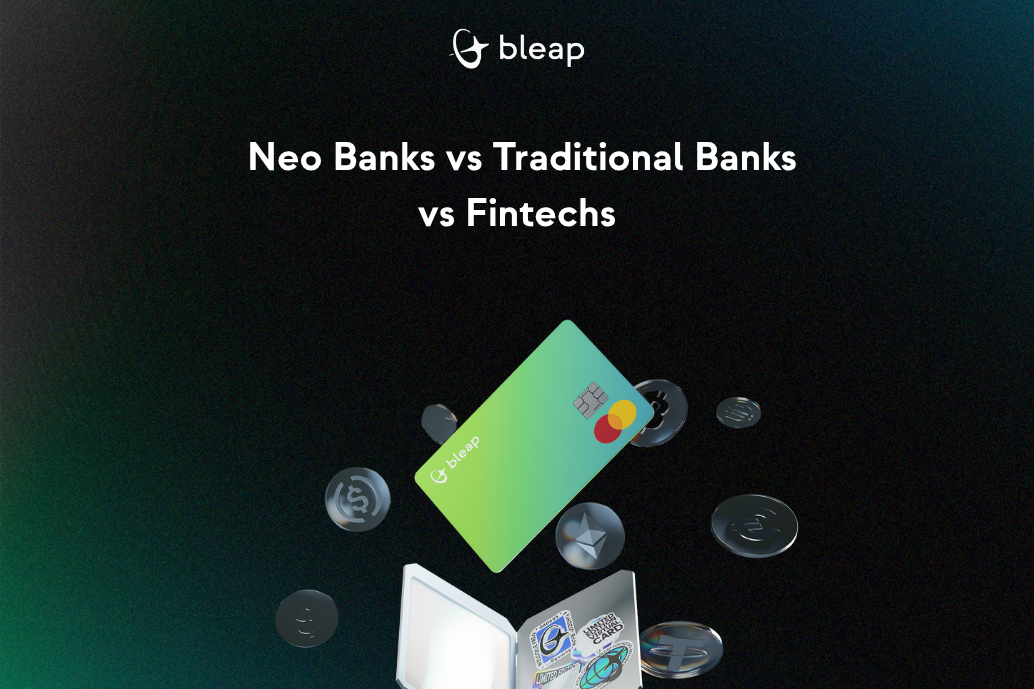
This content is for educational purposes only and should not be considered financial advice. Crypto investments carry risks, including loss of capital. Always do your own research or consult a licensed advisor before investing.
A neo bank is a fully digital financial institution that provides banking services via mobile apps or websites, offering lower fees, faster onboarding, and a modern user experience compared to traditional banks.
Neo banks combine the agility of fintechs with the trust of traditional banks.
They operate 100% online, removing bureaucracy, simplifying finance, and empowering users to control their money with transparency and speed.
Neo banks are fully digital institutions offering full banking services through mobile apps or web platforms.
👉 For a deeper explanation of what a neo bank is and how it works, read our guide: What Is a Neo Bank?
Traditional banks are long-established financial institutions that manage deposits, loans, investments, and payments.
They’re regulated by central banks and rely heavily on physical branches.
Key characteristics:
Traditional banks remain the safest option for those who value physical presence and deposit protection, but they lag in speed, innovation, and transparency.
Examples: HSBC, Santander, Chase, CaixaBank.
Fintechs, short for financial technology companies, design digital tools that improve or automate financial services.
They don’t hold banking licenses but often partner with regulated banks to deliver specialized solutions.
Key characteristics:
Fintechs revolutionized financial accessibility after the 2008 crisis, giving users faster and more inclusive alternatives to banks.
Examples: PayPal, Robinhood, Klarna, Revolut (early stage).
Neo banks are digital-only financial institutions that merge fintech innovation with full-service banking capabilities.
They provide all core banking functions, from accounts to payments, entirely online.
Key characteristics:
Neo banks sit between traditional banks and fintechs, they deliver the same services as banks but with the innovation and simplicity of fintechs.
Examples: N26, Monzo, Chime, Bleap.
According to McKinsey (2024), 1 in 4 new bank accounts in Europe is now opened via a digital-only bank.
Neo banks are the sweet spot between innovation and trust.
They deliver real-time control and financial freedom without the friction of legacy banking.
Main advantages:
Neo banks are up to 4x faster and 60% cheaper than traditional banks in day-to-day operations.
Bleap goes beyond neo banking by connecting traditional finance and blockchain in one non-custodial experience.
It’s a Web3-native neo bank designed for users who want control, transparency, and real yield, not just convenience.
With Bleap, you can:
🔗 Try Bleap, the neo bank redefined for Web3 users.
Open your account today and experience 100% control of your money.
While most neo banks rely on partner custody, Bleap operates fully on-chain, giving you security, yield, and ownership combined.
The financial ecosystem is merging fast.
Traditional banks are digitizing, fintechs are becoming banks, and neo banks are integrating Web3 and DeFi.
The next era of finance will be:
Bleap represents this next phase: where banking meets blockchain and users truly own their money.
Yes. Most are regulated or partner with licensed banks, using advanced encryption and biometric verification.
Fintechs create digital tools for finance, while neo banks provide complete banking services using fintech technology.
Many offer credit or overdrafts through partnerships with licensed institutions.
Bleap is non-custodial and Web3-native, combining yield, DeFi access, and real spending power — all under user control.
Neo banks are not just modern banks, they’re a symbol of how finance should work: fast, fair, and borderless.
Traditional banks gave us security. Fintechs gave us innovation.
Now, Bleap and the next generation of neo banks give us freedom, financial freedom powered by transparency and technology.
Own your money. Live borderlessly. Start with Bleap.
Features
Improvements
Bug fixes